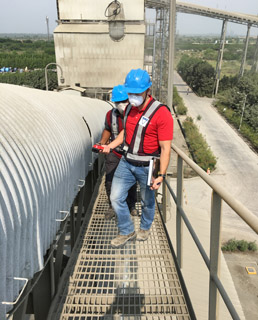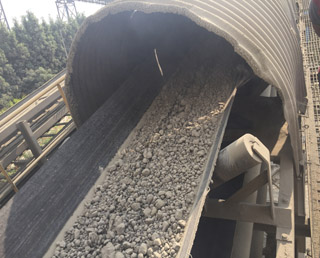Evaluating Your Cement Plant: Why Assessments are a Necessity
 Evaluations are a part of our everyday lives. Doctors evaluate your health, teachers evaluate your academic performance, coaches evaluate your athleticism, banks evaluate your credit, and bosses evaluate your productivity.
Evaluations are a part of our everyday lives. Doctors evaluate your health, teachers evaluate your academic performance, coaches evaluate your athleticism, banks evaluate your credit, and bosses evaluate your productivity.
So why isn’t someone evaluating the health, performance, and productivity of the belt conveyor system in your cement plant? Performing an assessment on your belt conveyor serves much like a preventative care check at your doctor’s office. You should be taking care of your heart AND the heart of your operation – your conveyors.
The value of an assessment
What is more cost-effective and efficient … scheduled preventative maintenance or unscheduled downtime?
If you answered, “Scheduled preventative maintenance,” then you know the value of an assessment. Assessments allow you to see into the future and predict what belt conveyor challenges could become issues down the road – like your very own crystal ball of productivity. That glimpse into the future allows you to address those issues on your own time, instead of reacting to a catastrophic event.
Unscheduled periods of downtime can lead to some major problems, including the inability to fulfill customer demands, worker downtime, overtime pay, expensive repairs and even safety issues as a plant struggles to get back up to speed. Worst of all, it affects the plant’s bottom line.
Where do I get an assessment?
Bringing in a third party who can assess your belt conveyor system and provide you with the feedback you need to keep your cement plant running at peak performance is a must. A fresh set of eyes looking at your system from an outside view is key, especially since resources have been reduced at many operations and worker safety is still a major concern. Plus, the number of violations a plant can accumulate after a visit from an inspector can often result in unexpected downtime – another reason regularly scheduled assessments are so important.
What can I expect from an assessment?
 While each cement plant is different, the elements of a good belt conveyor assessment are the same. And the No. 1 rule of thumb is to look at the conveyor system holistically.
While each cement plant is different, the elements of a good belt conveyor assessment are the same. And the No. 1 rule of thumb is to look at the conveyor system holistically.
While each product in a conveyor system is a separate component, the entire system should be evaluated as a whole to ensure that everything is compatible. A lot of different things could be happening to cause mistracking down the line – from a damaged conveyor structure, to off-centered loading, to an unsquared belt, and much more. A full conveyor assessment can identify the source of the problem and offer a solution.
Speaking of solutions, focusing on system solutions as opposed to simply focusing on replacing specific products, is also key to a good conveyor assessment. Whoever walks the beltline needs to identify all of the issues they find, not simply the issues that they can fix with their specific product or service.
The point of an assessment is not to simply identify problems, but to identify the root cause of those problems. Simply telling an operation that the belt is dirty and suggesting a product to “fix” the problem is not a best practice when it comes to assessments. Explaining why the problem is happening and how the solution can help is the main job of the assessor.
Count on Flexco for your belt conveyor assessment
Flexco understands that cement plants haul some of the most abrasive materials on the planet, and that those materials can do a number on your conveyor system. That’s why we offer free belt conveyor assessments, performed by your local Flexco expert. Click here to watch a quick video and learn more about what goes on during a Flexco assessment and to sign up for one of your own.
Authored by: Franklin Moore, Industry Manager
Moore identifies focus markets, researches chosen industries, and concentrates on the voice of the customer. He develops sales tools and programs to help our teams better understand the pain points present in each industry. Currently, Moore is focusing on Flexco solutions for the cement industry now and in the future. Moore holds a bachelor’s degree in finance from Michigan State University.
Subscribe to the Flexco Blog
Published Date
August 01, 2019Product Groups
- Belt Cleaning Systems
- Belt Positioners, Trackers, and Trainers
- Impact Beds and Skirting Systems
Industry
- Cement
Issues
- Belt Wear
- Blade Life
- Carryback
- Downtime
- Maintenance
- Slippage
- Spillage